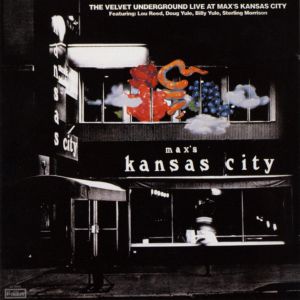
- Format: MP3

The original 1972 release of Live at Max's Kansas City was a single LP, cobbled together from recordings that fabled Velvet Underground fan Brigid Polk made on her personal tape recorder on the night of August 23, 1970, when VU played two sets at the legendary New York club Max's Kansas City. It's long been debated whether this is actually the final date Lou Reed played with the Velvets, but there's little question that this captures the band in its final days, when Reed's interest in the band was declining and when a pregnant Maureen Tucker was on hiatus and replaced by Doug Yule's teenage brother Billy. The change in drummers is significant since Billy is a straight-ahead rock & roll drummer, far more accomplished than Tucker, and gives the band forward momentum at the expense of their long-standing mystique. It's a different, inferior band than the classic lineup of the Velvet Underground — who are documented well on the excellent double-volume set 1969: Velvet Underground Live and the 2001 box Bootleg Series, Vol. 1 — but they're still very good, and Live at Max's Kansas City is both enjoyable as music and a historical document of a great band at the end of the road. In other words, it's one for the fans, and it's even more so given the decidedly lo-fi, bootleg-quality of the tapes, which are, after all, amateur audience tapes, right down to prominent audience chatter between and sometimes during the songs (that it's poet/rocker Jim Carroll who's the most prominent voice makes it somewhat more interesting). If the original LP issue was one for the fans, Rhino's 2004 expanded double-CD reissue of the album is even more so since it contains more or less the entirety of the two sets, including six previously unreleased tracks, all of which are of a similar musical standard to what constituted the original album. Some of these clearly remained in the vault because of problems with the recordings — set two opener "Who Loves the Sun" begins mid-song, while "Candy Says" has a fascinating conversation between two audience members about seeing Patton recently — while others, such as a surging "White Light/White Heat," could have made the finished LP if there had been space. The CD gives the compilers room to roam with the entire set, and while this expanded set offers no revelations — and the fidelity, while improved, is still bootleg-quality — it still has the advantage of offering the entirety of a historical recording instead of the highlights, which ultimately does make it an improvement over the original, even if the music is still only of interest for fanatics.